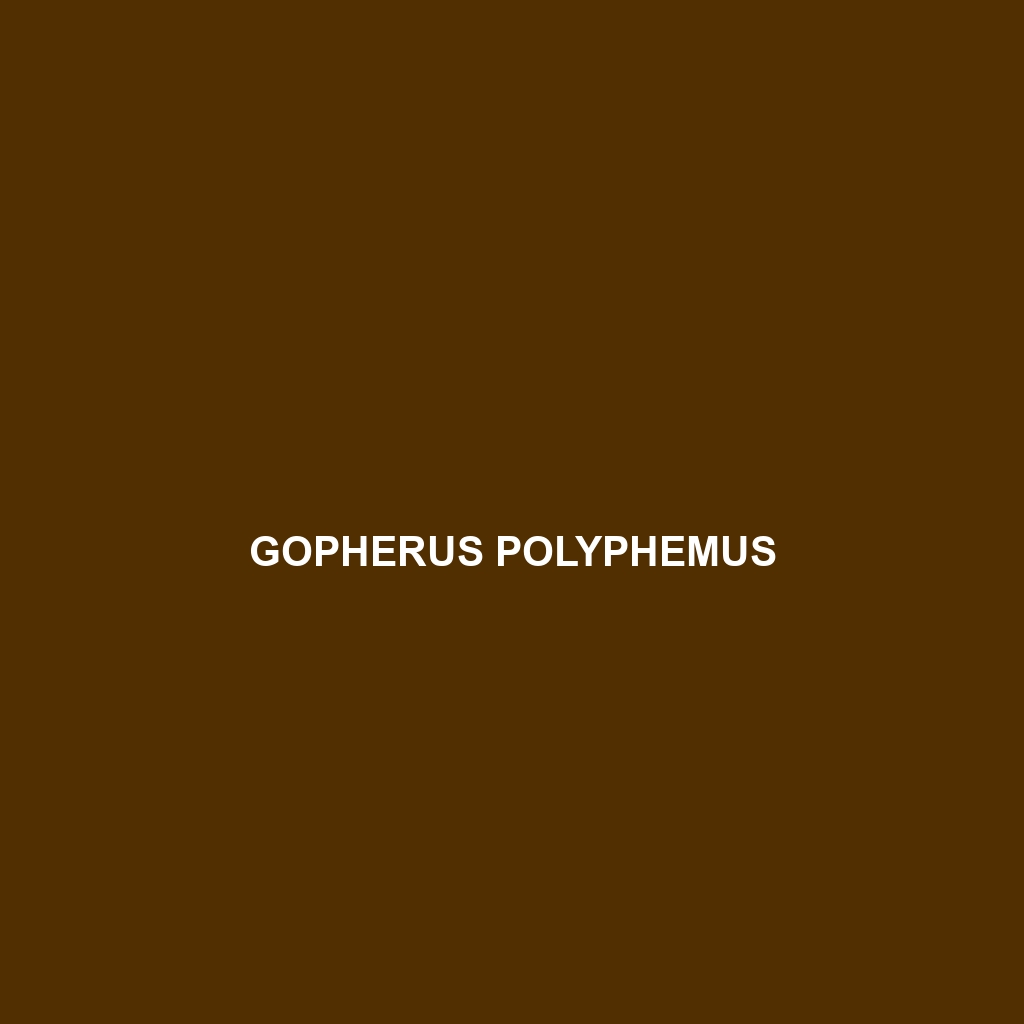Common Name
Gopherus polyphemus
Scientific Name
Gopherus polyphemus
Habitat
The Gopherus polyphemus, commonly known as the gopher tortoise, primarily inhabits the southeastern United States, particularly within regions like the longleaf pine forests, coastal plains, and dry uplands of Florida, Georgia, Alabama, and parts of Mississippi and South Carolina. This species thrives in a variety of environmental conditions that include sandy soils, which facilitate their burrowing behavior. The gopher tortoise prefers habitats that experience warm temperate climates, although it can be found in subtropical areas as well. Such diverse habitats promote the overall biodiversity of the ecosystem, with gopher tortoises playing a crucial role in maintaining their surroundings.
Physical Characteristics
Gopherus polyphemus typically has a robust shell, known as a carapace, which can vary in color from dark brown to light tan, often featuring a somewhat flattened shape. These tortoises can grow to a size ranging from 9 to 15 inches in length, with males often being slightly larger than females. Their distinguished features include large, sturdy limbs adapted for digging and a distinctive, high-arched shell. One key aspect is their elongated front claws, which are crucial for the deep burrowing they engage in, making them easily identifiable within their habitat.
Behavior
Gopher tortoises exhibit fascinating behaviors, particularly their burrowing habits. They typically dig long, deep burrows that can extend up to 40 feet and serve as shelters for themselves and other species. This burrowing behavior is vital, as it helps regulate their body temperature and provides a haven from predators and harsh environmental conditions. Though primarily diurnal, they show some level of nocturnal activity, especially during warmer months. Mating rituals are quite intriguing, as males will often display their dominance through head-bobbing and vocalizations to attract females.
Diet
Gopherus polyphemus is primarily herbivorous, feeding on a variety of grasses, leaves, fruits, and flowers. Their diet often consists of native plants, making them important grazers in their environment. The gopher tortoise has been observed to consume over 300 different plant species, including various legumes and wildflowers. Their feeding patterns contribute to seed dispersal and the overall health of their ecosystem, as they help to maintain plant diversity.
Reproduction
The reproductive cycle of Gopherus polyphemus begins with a mating season from April through June. Females typically lay clutches of 3 to 15 eggs during the summer months, often burying them in sandy soils. The gestation period for these eggs ranges from 80 to 100 days, with hatchlings emerging in the late summer or early fall. After hatching, juvenile tortoises are left to fend for themselves, though many do not survive their first year due to predation and environmental challenges. Parental care is minimal, which emphasizes the need for habitat protection to support their vulnerable populations.
Conservation Status
As of now, the conservation status of Gopherus polyphemus is classified as Threatened under the Endangered Species Act. The primary threats to their survival include habitat loss due to urban development, agricultural practices, and climate change. Conservation efforts are underway, focusing on habitat protection and restoration, public education on the importance of this species, and community engagement to mitigate human impact. Organizations are working to establish preserves and promote practices that protect this keystone species and its environment.
Interesting Facts
One of the remarkable aspects of Gopherus polyphemus is their longevity; they can live for over 40 years in the wild and significantly longer in captivity. Additionally, the gopher tortoise is considered a keystone species due to the impact their burrows have on the ecosystem. Many other animals, including rabbits and various bird species, use these burrows for shelter, thus enhancing the overall biodiversity of the ecosystem. Their unique defensive mechanism includes retracting their limbs and heads into their tough shell to ward off predators.
Role in Ecosystem
Gopherus polyphemus serves a crucial role in its ecosystem as both a herbivore and a facilitator of biodiversity. By grazing on a variety of vegetation, these tortoises help shape plant communities and promote a healthy ecosystem. Their extensive burrowing behavior not only provides housing for themselves but also creates habitats for multiple other species, effectively promoting species richness and ecological stability. In this sense, the gopher tortoise acts as a vital component of the agricultural landscape, influencing soil health, nutrient cycling, and the intricate web of life in their environments.
